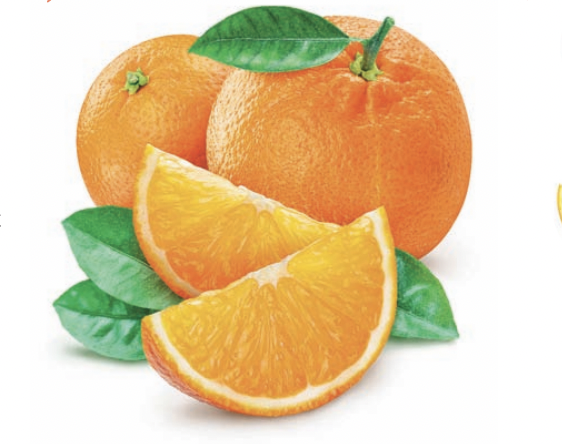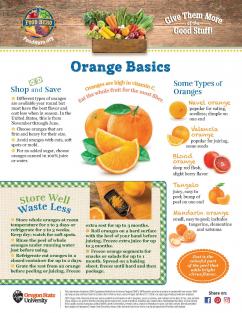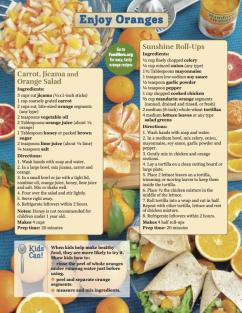Orange Basics
Oranges are high in vitamin C. Eat the whole fruit for the most fiber.

Shop and Save
- Different types of oranges are available year round but most have the best flavor and cost less when in season. In the United States, this is from November through June.
- Choose oranges that are firm and heavy for their size.
- Avoid oranges with cuts, soft spots or mold.
- For no added sugar, choose oranges canned in 100% juice or water.
Some Types of Oranges
Navel orange
- popular for eating
- seedless
- dimple on one end
Valencia orange
- popular for juicing
- some seeds
Blood orange
- deep red flesh
- slight berry flavor
Tangelo
- juicy
- easy to peel
- bump of peel on one end
Mandarin orange
- small
- easy to peel
- includes tangerine, clementine and satsuma
Store Well Waste Less
- Store whole oranges at room temperature for 2 to 3 days or refrigerate for 2 to 3 weeks. Keep dry; watch for soft spots.
- Rinse the peel of whole oranges under running water just before using.
- Refrigerate cut oranges in a closed container for up to 2 days.
- Grate the zest from an orange before peeling or juicing. Freeze extra zest for up to 3 months.
- Roll oranges on a hard surface with the heel of your hand before juicing. Freeze extra juice for up to 3 months.
- Freeze orange segments for snacks or salads for up to 1 month. Spread on a baking sheet, freeze until hard and then package.

Zest is the colorful part of the peel that adds bright citrus flavor.
Enjoy Oranges
Carrot, Jicama and Orange Salad
Sunshine Roll-Ups
Kids Can!
When kids help make healthy food, they are more likely to try it. Show kids how to:
- rinse the peel of whole oranges under running water just before using.
- peel and separate orange segments.
- measure and mix ingredients.




